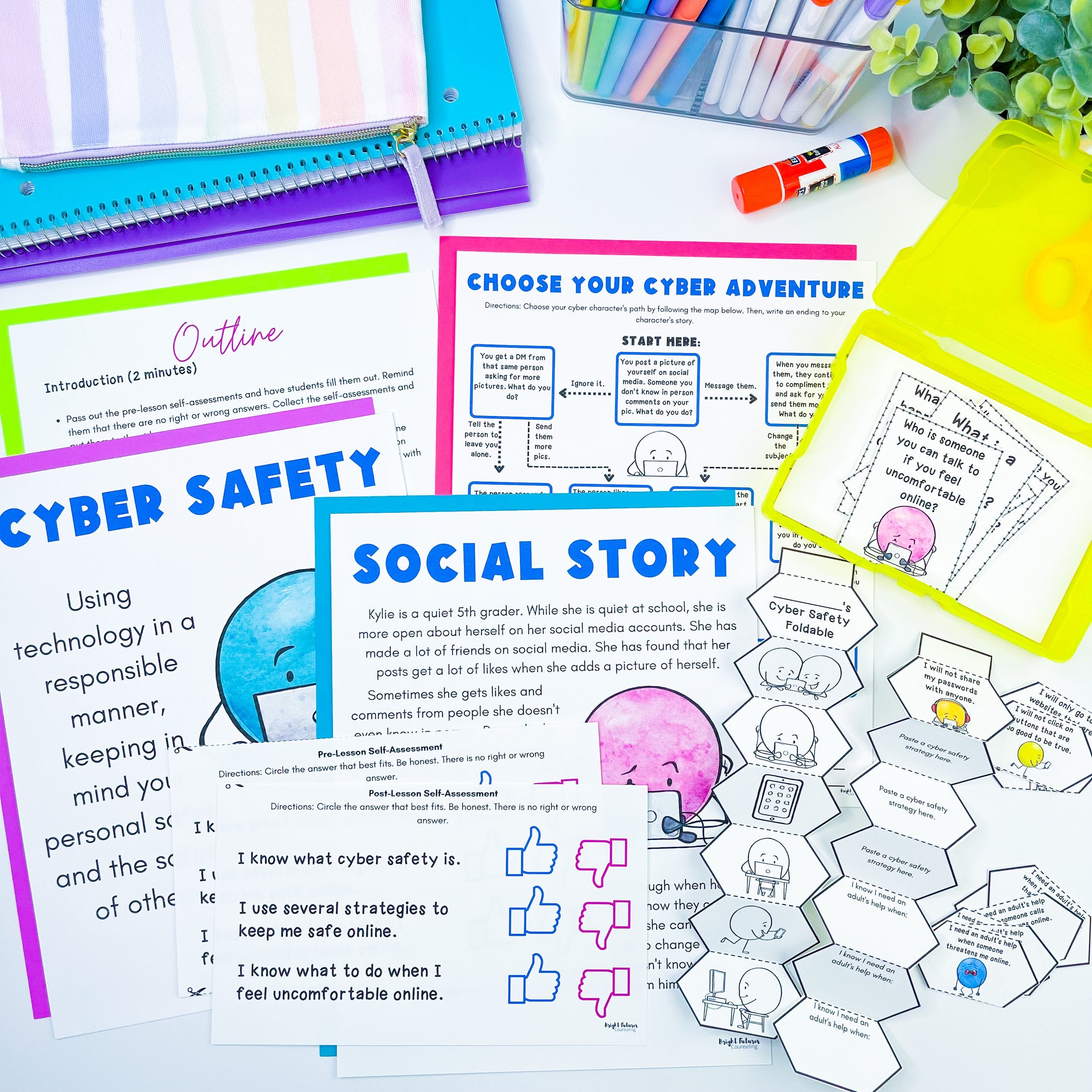7 Fun Ways to Teach Cyber Safety in the Elementary Classroom
By: Neeti Sarkar
It's been over three years since we first went online, yet, here we are, back in school, physically, still battling the repercussions of having been online for a year and a half. From what I've gathered, parents and teachers across the world are struggling to get kids off devices. From excessive screen time and cyberbullying to the potential threat to children's safety online, I have found value in teaching students about cybersafety even before there is a problem to be solved.
While class lessons are a must (This Cyber Safety Guidance Lesson has been my go-to for the past three years), I have found that students enjoy more hands-on/movement-based activities related to this topic. If you're scouting around for some fun and easy ideas to teach cyber safety, you might be interested in incorporating some of these:
1. Scavenger Hunt
If you have time to do some prep work, you could write down a whole bunch of cyber safety tips (think secure passwords, not sharing personal information, no talking to strangers online, etc) and have them hidden around the classroom/school. Go ahead and divide the class into smaller groups or have them work in pairs to go and find these tips. Follow this activity up with a debriefing session where each group/pair gets to explain what their online safety tip means.
2. Quiz Show
Growing up, quiz shows used to be my absolute favorite. When I came across this jeopardy-inspired Meet the Counselor Game Show, I had to find other ways to use it! For an activity like this, you could have students competing in teams to answer questions about cyber safety. Having some sort of prize for the winning team makes the game more fun. With the younger students, I keep the questions straightforward. With the older ones, I try to include situation-based cyber safety questions.
3. Digital Footprint Artwork
In Grade 5, before I start my cyber safety lesson on digital footprint, I have each student trace one of their feet on a piece of paper. I then ask them to think of all the apps and websites they commonly use and draw/color the logos or at least write down the names of these platforms inside the traced footprint. We then go on to discuss what is in our digital footprint, if everyone in the world has one, and what positive and negative digital footprints might look and sound like. In my experience, this activity has worked as a great provocation into the rest of the unit.
4. Role-Play
Especially when teaching about netiquette and cyberbullying, I like having my students role-play different scenarios related to these topics. Based on the scenarios you give them, they can play the roles of the victim, the bully, the bystander, the upstander, and the trusted adult, to get a better understanding of how their words and actions can affect others online.
5. Escape Room
Yes, escape rooms are still trending. This is another activity that may require additional time to prep but students are bound to have fun working in groups to solve puzzles related to cyber safety in order to escape a virtual room/part of the physical classroom and move on to the next one until they reach the end.
A couple of pointers -before you go about making grand plans, think about what you want your students to accomplish with this experience. Remember, you can use escape rooms to either introduce a new topic or review a topic you've already explored. Make sure that every clue, puzzle, and question tie into your topic. Keep it simple, especially the first few tasks. Make sure to reflect on the experience once it is completed.
6. Board Game
A roll-and-respond type of board game is perfect when you're working with a small group of students. You could come up with your own version using a generic template and questions related to cyber safety. The game involves students rolling the dice and moving along the board while answering questions about online safety. I would use an activity like this in a small group setting for it to be most effective.
7. Treasure Hunt
This activity needs some prep work for sure. What you'd need to do is hide objects that relate to online safety around the school/classroom. Give students clues as to what they are. Once they find them all, go ahead and have a debriefing session about how each object relates to a particular aspect of online safety. Have students share their thoughts and even debate if they'd like to.
What are your go-to activities for teaching students about online safety?
About the author: Neeti Sarkar is a Primary School Counselor at an IB school in Bangalore, India. Over the span of almost 10 years, she's worked with students aged 3-18, but enjoys working with the littles the most. Neeti's also a seasoned journalist, so when she isn't making behaviour plans, teaching guidance lessons, and supporting her school community in various other ways, she makes time for her other passion- writing.
SHARE:









